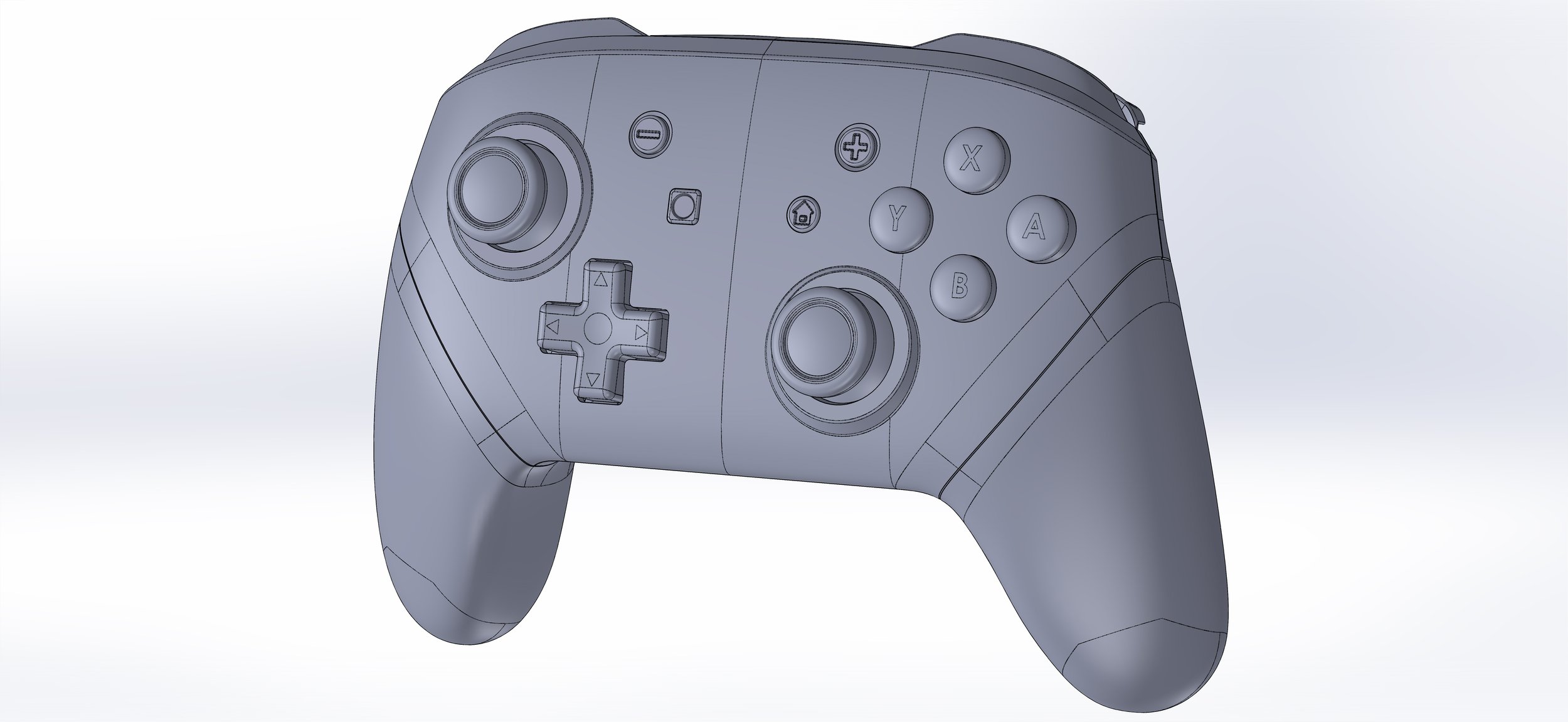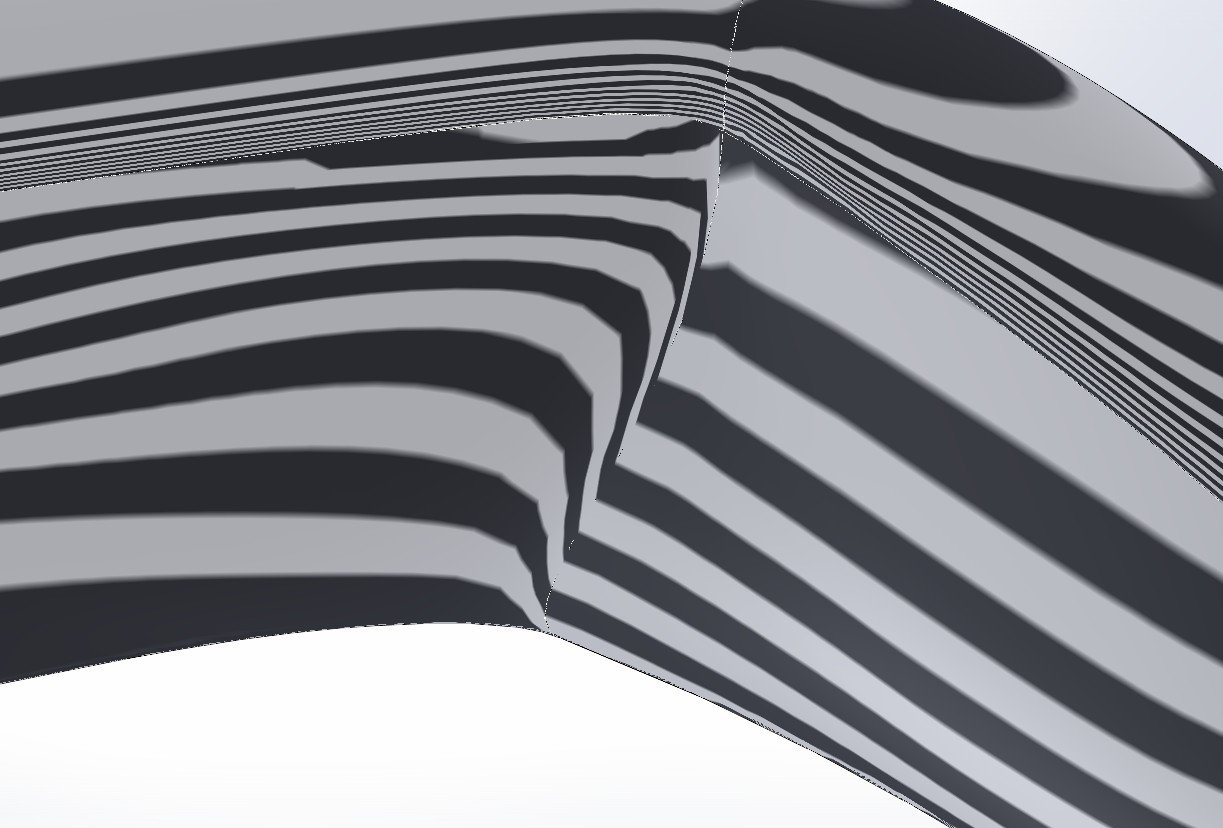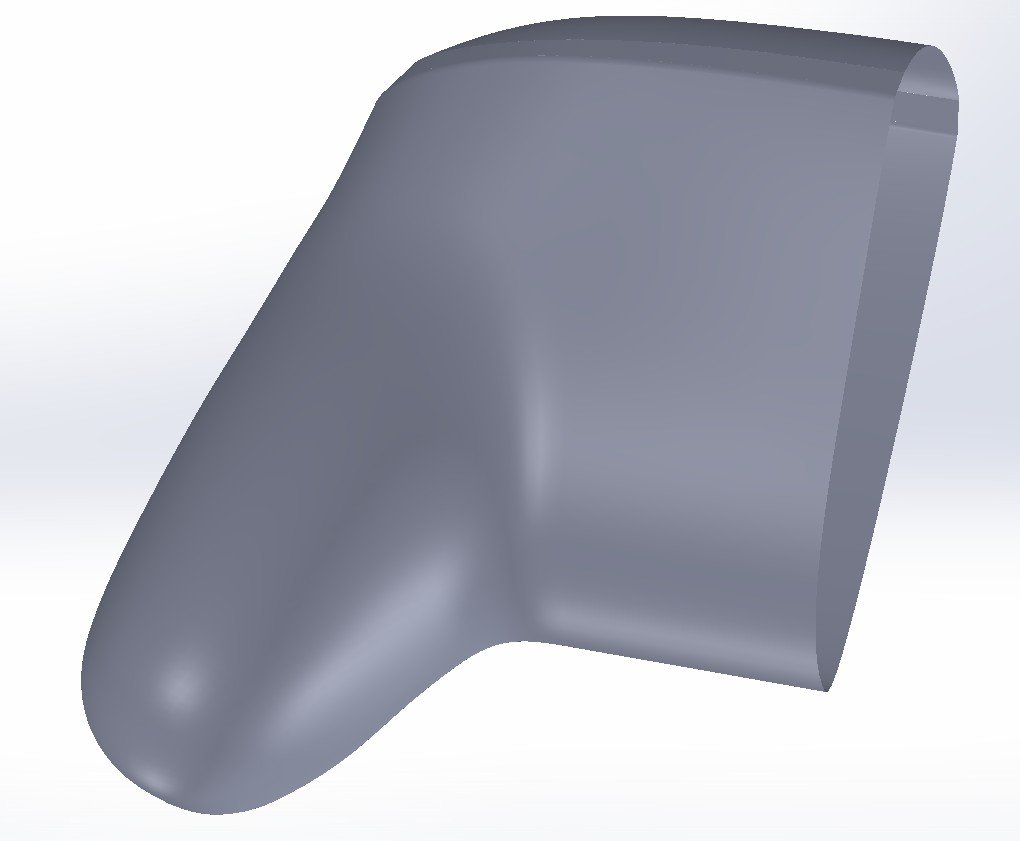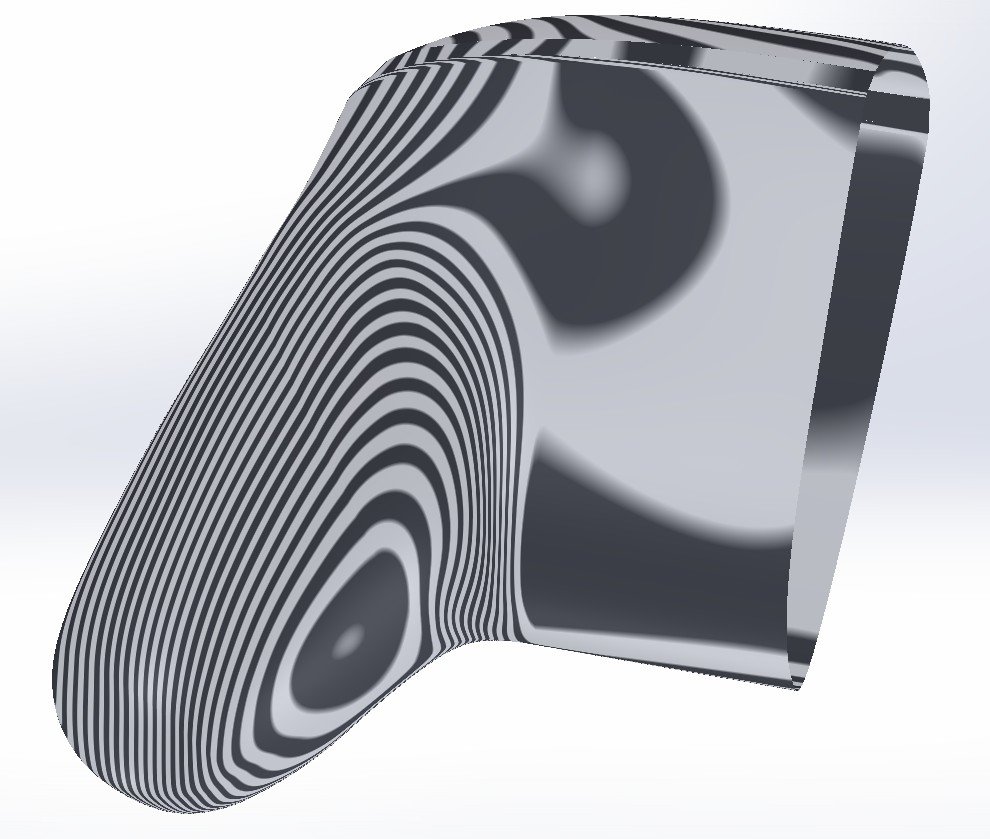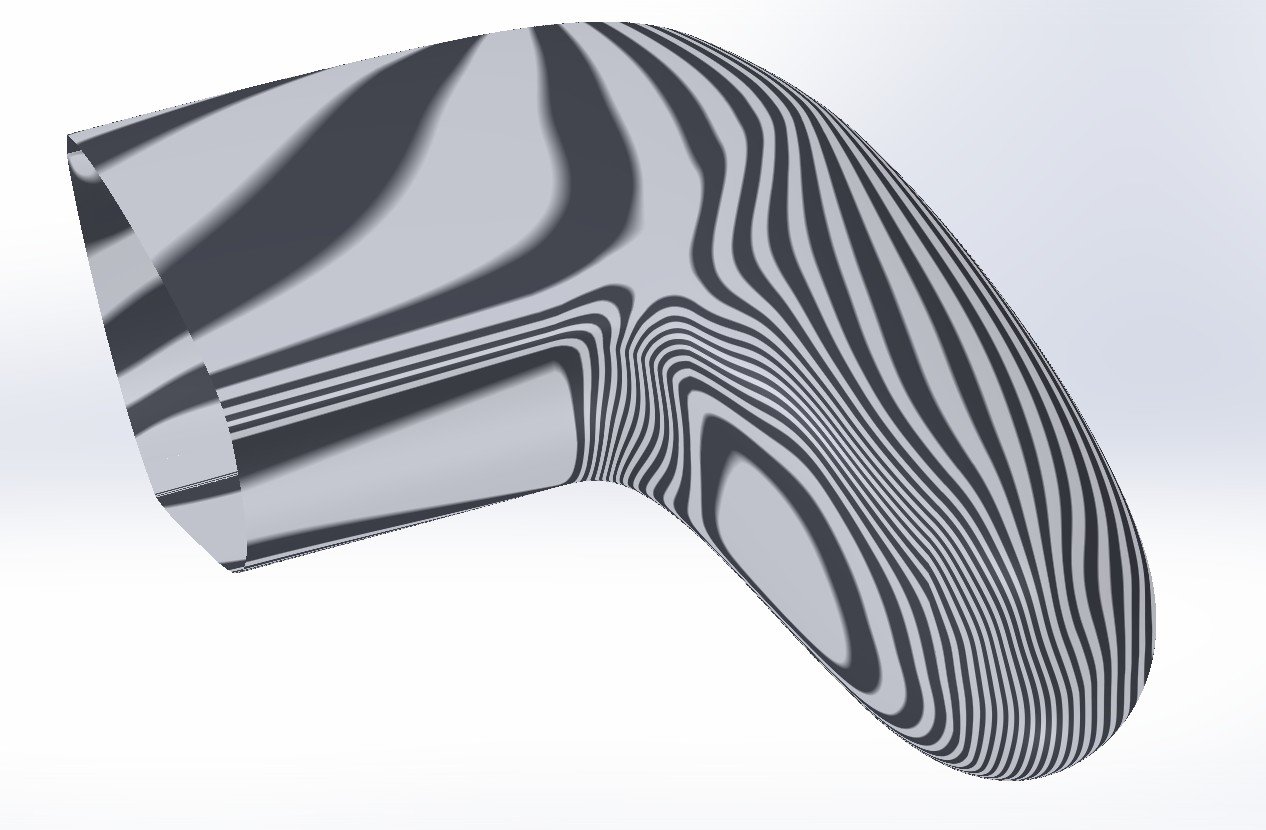Nintendo Switch Pro Controller SolidWorks Model
This page builds on my YouTube video here. If you wish to purchase this file and support my work, you may do so here.
A while back I attempted to model a Nintendo Switch Pro controller in SolidWorks - mainly as a surfacing exercise. I wanted to focus on making surfaces that were of reasonably high quality. That is, ensuring tangency continuity was maintained across adjacent surfaces, and in general achieving good surface flow - evaluated using the zebra stripes tool in SolidWorks. In the real world, this essentially equates to how well the physical (manufactured) model will interact with light & reflections.
I quickly found out that my surfacing skills and knowledge were not up to par to produce high quality surfaces. In this page I’ll briefly discuss some of my failed attempts, and then go through the final model that I was happy with.
In my early attempts I was trying to do too much with too few surface features. For example below, I was attempting to make large surface bodies as well as capturing fine detailed blends (fillets, tight bends, curve transitions etc.) in a single surface feature. This did not provide enough control to achieve good results. Sometimes I could capture the large macro form, but the transition to an adjacent surface was not good, and if I tried to improve the transition then I would lose detail of the macro form. Also, in general there were surface transitions that I could not get a good flow across (see zebra stripes below).
I went away and improved my surfacing knowledge and attempted the model again. This time using techniques, such as over-building surfaces and trimming away unwanted regions, as well as first building primary surfaces and then blending between them. I found the Alias golden rules to be a very good surfacing resource.
The final model achieved much better (although not perfect) zebra stripe results.
I also frequently used the curvature analysis tool to evaluate the change in curvature. Ideally aiming for smooth color transitions and avoiding discrete surface wrinkles, which would be represented as isolated red spots/streaks
Overall I was happy with the result. This model would still require a lot of work to be production ready, but my main focus was to capture the outer form and develop my surfacing skills. If you have any questions feel free to reach out to me and thank you for any support!

